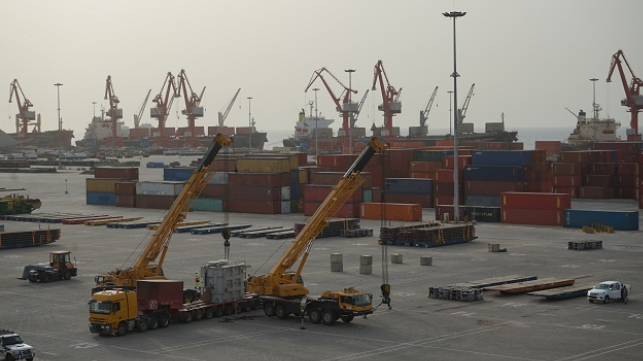Is China Using Africa to Shape a New Global Maritime Order?

Industrialization in Africa has been sluggish, with manufacturing accounting for only 13 percent of Africa’s GDP and 25 percent of its exports - a share which is the smallest of any region in the world. This is not a good prospect for a mineral-rich continent whose population is still stuck in rudimentary subsistence farming and occasional cash crops that won’t break even. The result has been abject poverty - ironic for what outwardly looks like a heaven. In fact, African nations had more robust manufacturing immediately following the years after independence from colonialism in the 1960s-70s than they have today in what many developmental economists attribute to industries that Europeans left behind.
This is an important foundation as it will help us dissect the subject of China’s domination of the development of Africa’s maritime gateways. For the last two decades since the start of this millennium, international trade patterns have changed markedly, with Africa treading away from its traditional Western European trading partners to the Eastern Asian economies, specifically China.
It is apparent that there is another scramble for the African continent, this time being led by Chinese investors in what might revive industrialization in Africa. As China cements its position as a global power, it seems to leverage Africa’s economic backwardness to achieve this goal by ushering the sleeping giant into an industrialized continent. The question on whether this will be a mutual benefit between Africa and China is open for debate, considering most of these ambitious investments have left many African nations trapped in immense debt.
Guided by the Belt and Road Initiative’s maritime component - the 21st Century Maritime Silk Road - China has set its foothold in virtually all sub-Saharan Africa seaports leading flagship port development projects running into billions of dollars. The Maritime Silk Road ostensibly will serve China’s core interests in its quest to become a global superpower, including the development of its more than $1.2 trillion blue economy, while also diversifying and securing sea lines of communications. It will also give China an added advantage in seeking to reduce disruptive forces along its key supply chains through ports as Africa increasingly exports mineral and agricultural commodities to China.
Without a doubt, this is a strategy by China to expand its maritime space far beyond its national boundaries and allow it through the participating countries to co-shape the future global maritime order. As of 2019, the only country in Africa that didn’t have a visible trade relationship with China was Eswatini (formerly Swaziland). Obviously, this is not coincidental but an intentional commercial move as the western economies focus on Africa’s banking and service industries.
Notably, China is channeling its foreign direct investment in the establishment of special economic zones in strategic ports in Africa. Examples include the financing and construction of Africa’s biggest trade zone, Djibouti International Free Trade Zone (DIFTZ). The recently inaugurated Dolareh Multipurpose Port, which is projected to boost Djibouti as a transshipment hub, was also constructed by the Chinese. Djibouti acts as a key gateway port for the neighboring landlocked Ethiopia, one of Africa’s fastest growing countries. China’s footprint in financing Africa’s first transboundary electrified railway, which links the port with Ethiopia, is critical in securing its supply chain.
A report released last year by Center for Strategic and International Studies (CSIS) identified 46 African seaports where China had financial, construction and operational involvement, all of which squarely aligned with Chinese broader political, military and commercial objectives. Chinese investment is present in about 17 percent of the 172 Sub-Saharan African ports listed in the 2017 World Port Index.
In addition, 41 of the 46 sub-Saharan African ports identified by the CSIS report had their construction or expansion overseen by Chinese entities. Some of these ports include the Kenya’s deep-water Lamu port, Bagamoyo port in Tanzania and the deep-water Tamatave port project near Toamasina in Madagascar. These projects ultimately enable China to collect intelligence on port infrastructure and establish a dependency on Chinese technology and expertise, which will cement Africa’s relationship with China in future port operations.
Clearly, there are two points we can glean from these developments. First, by China dominating in Africa’s port development projects, it is gradually extinguishing trade competition with other superpowers who are eyeing mineral-rich Africa to power the next technological order. Secondly, if African leaders up their game in trade negotiations with China, Africa might able to industrialize as Chinese investors move their manufacturing plants in Africa. This would help in job creation in what Kaname Akamatsu called the Flying Geese Paradigm (FGP), which predicts that industrialization will occur when factories from an industrialized country move to a developing one, like geese migrating over long distances.
Brian is a freelance writer based in Mombasa City, Kenya where he researches and writes on logistics and the African Blue Economy. His primary focus is on shipping and ports developments in Sub-Saharan Africa and how it fits into the global maritime order. He also provides consulting services in communications and public relations.
The opinions expressed herein are the author's and not necessarily those of The Maritime Executive.
